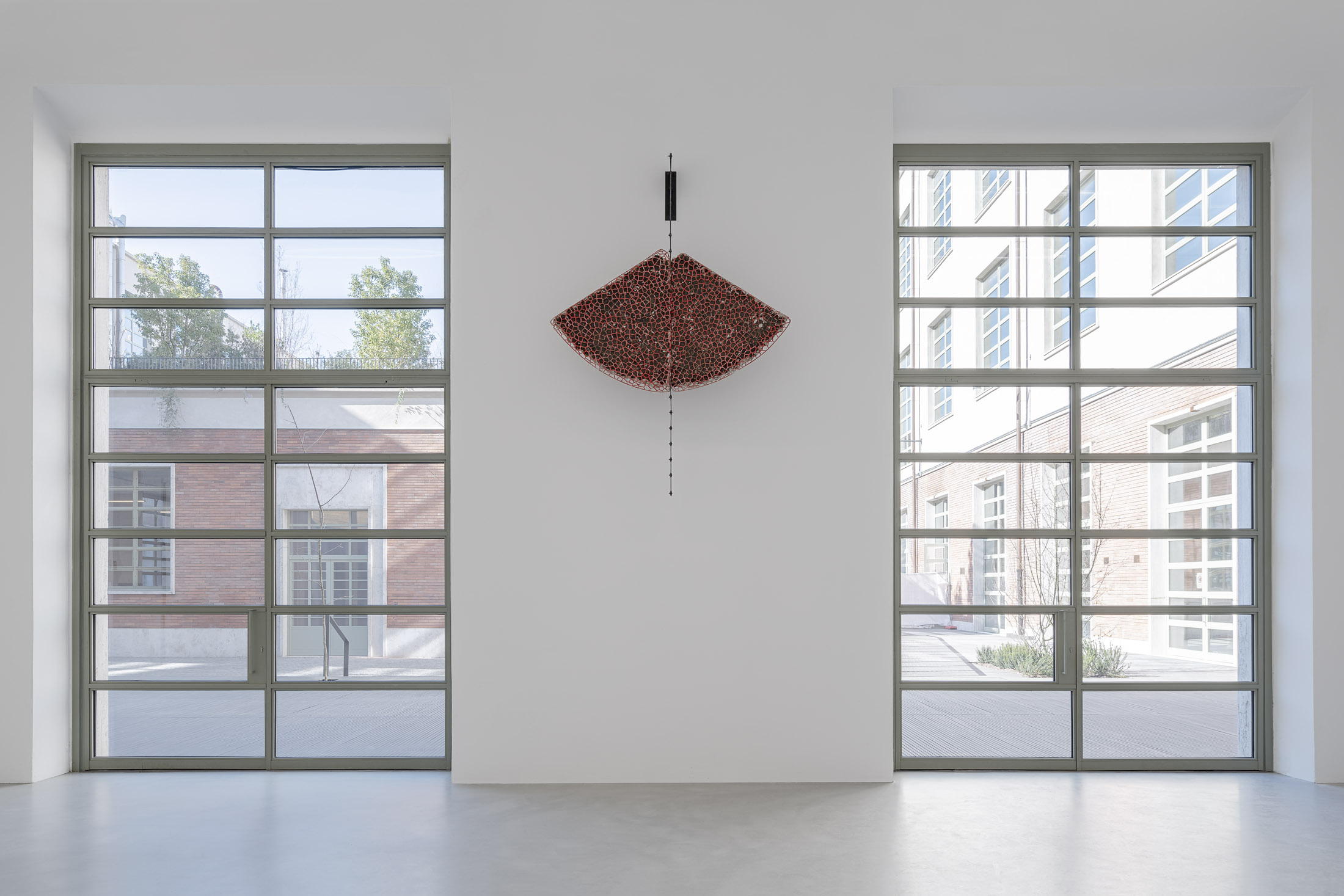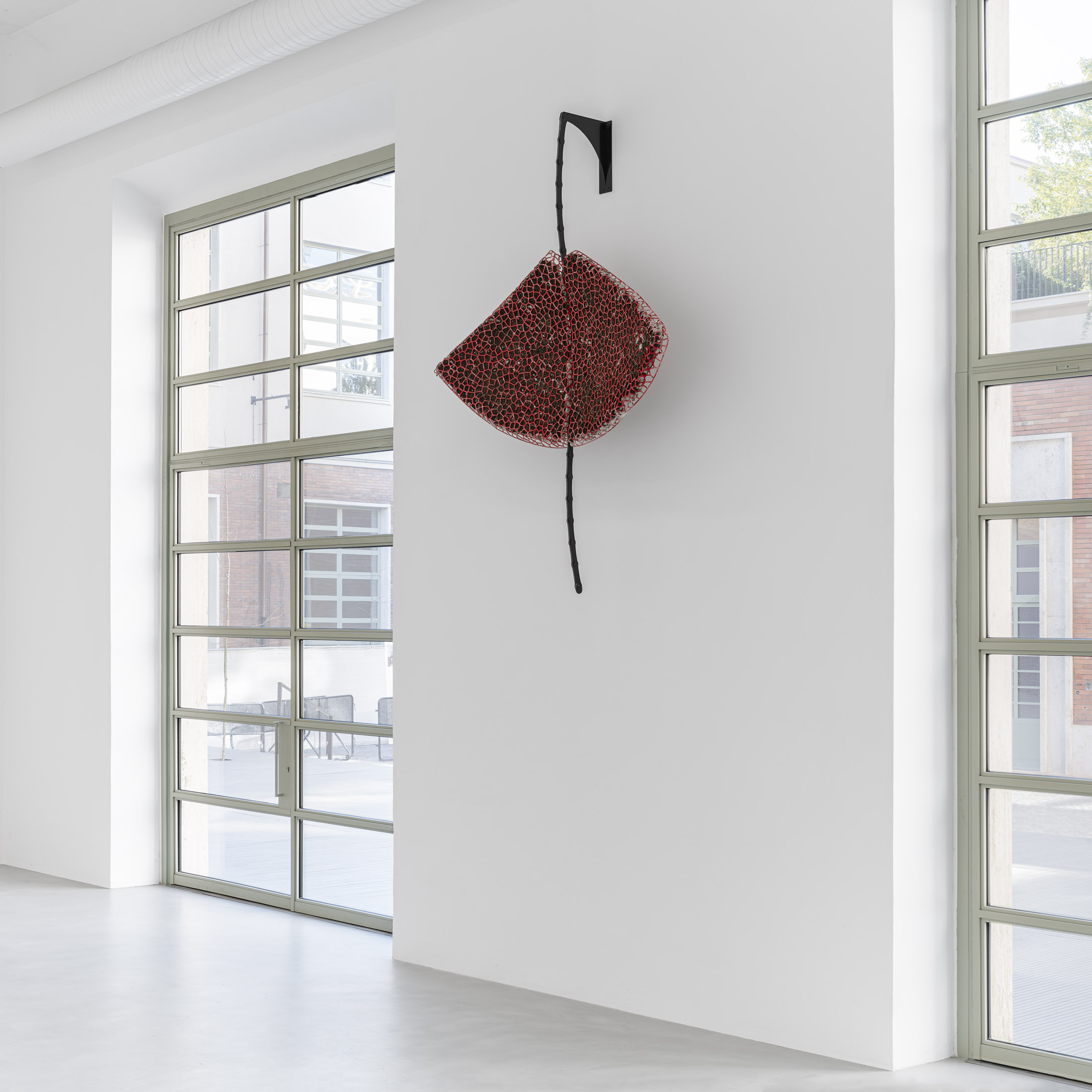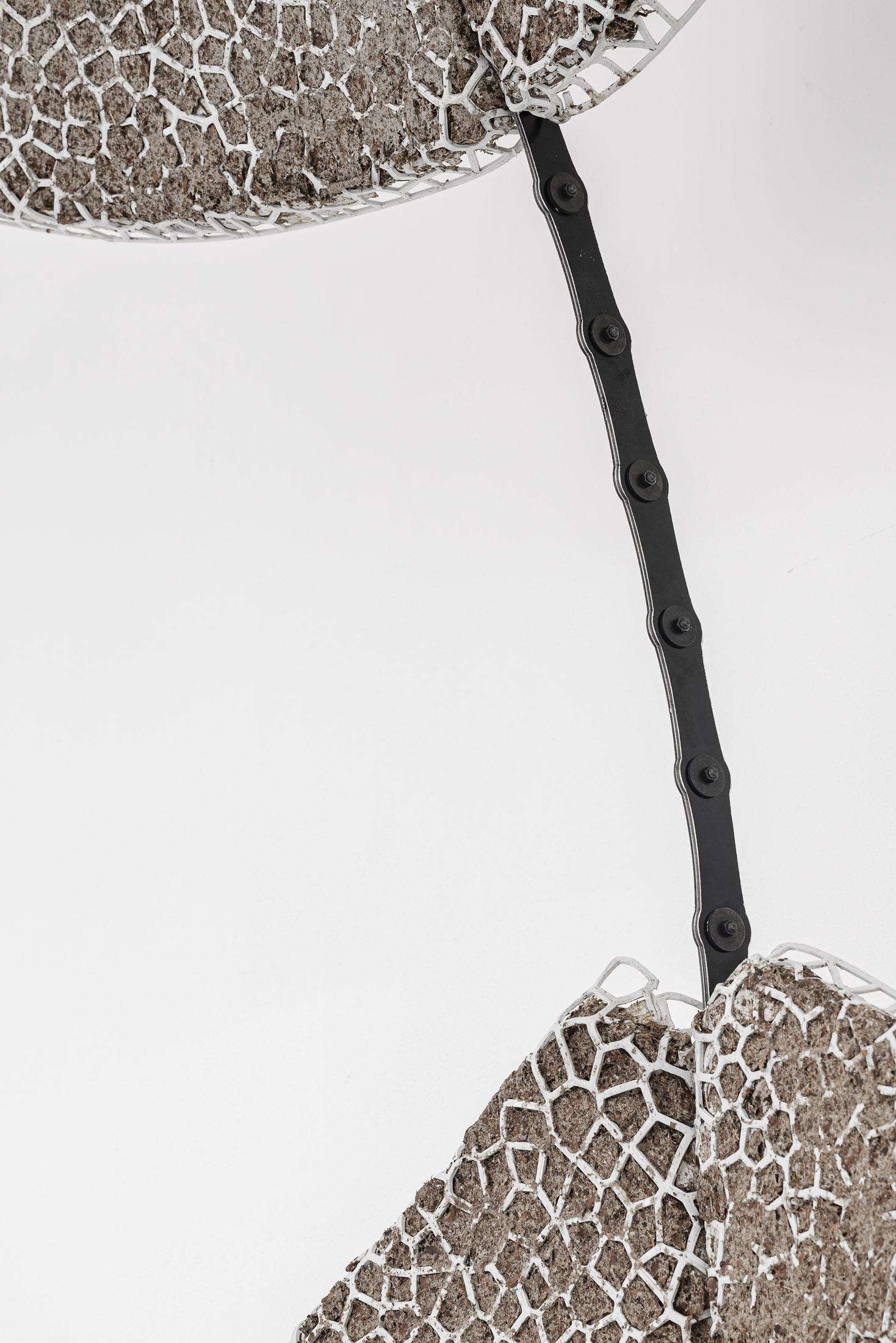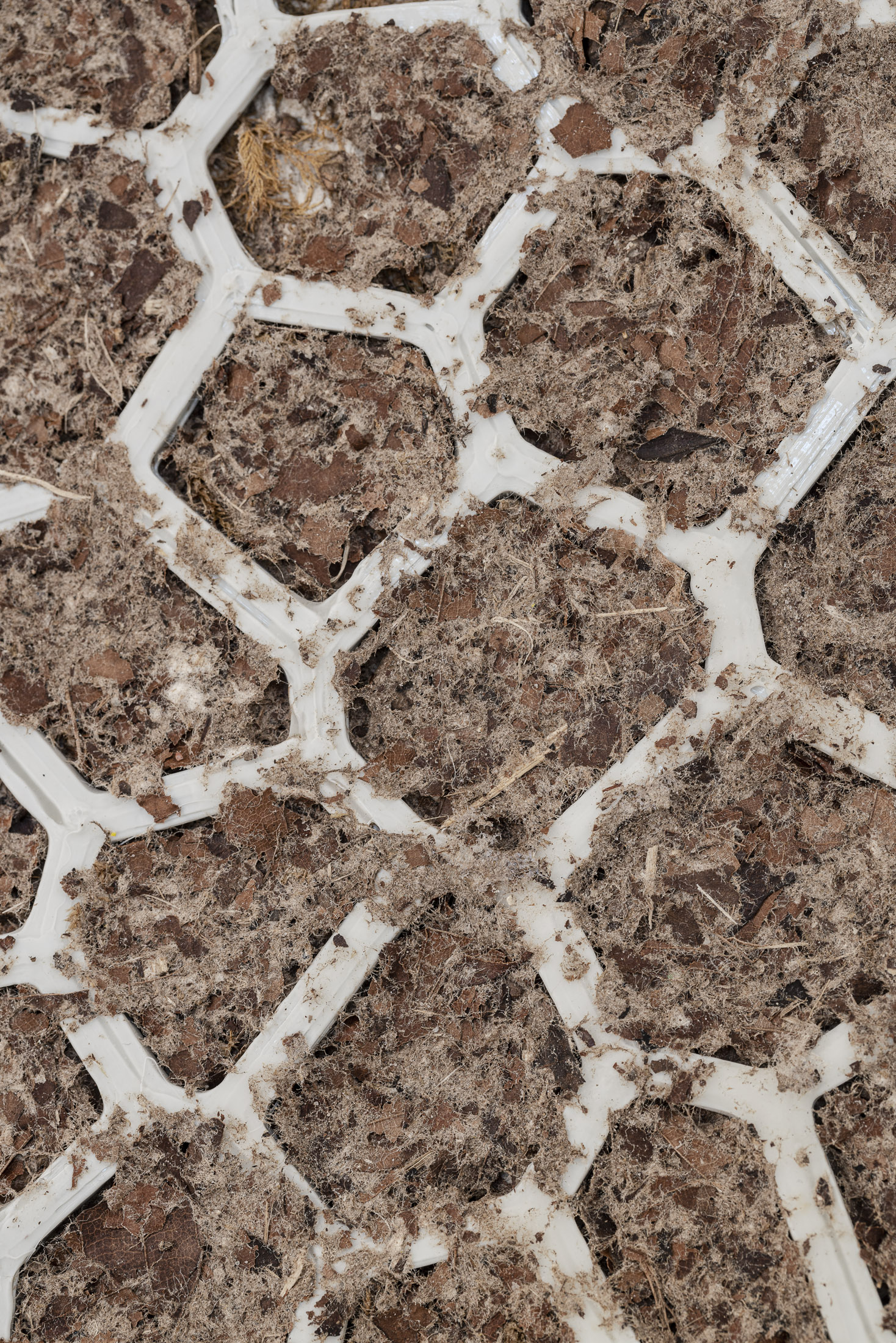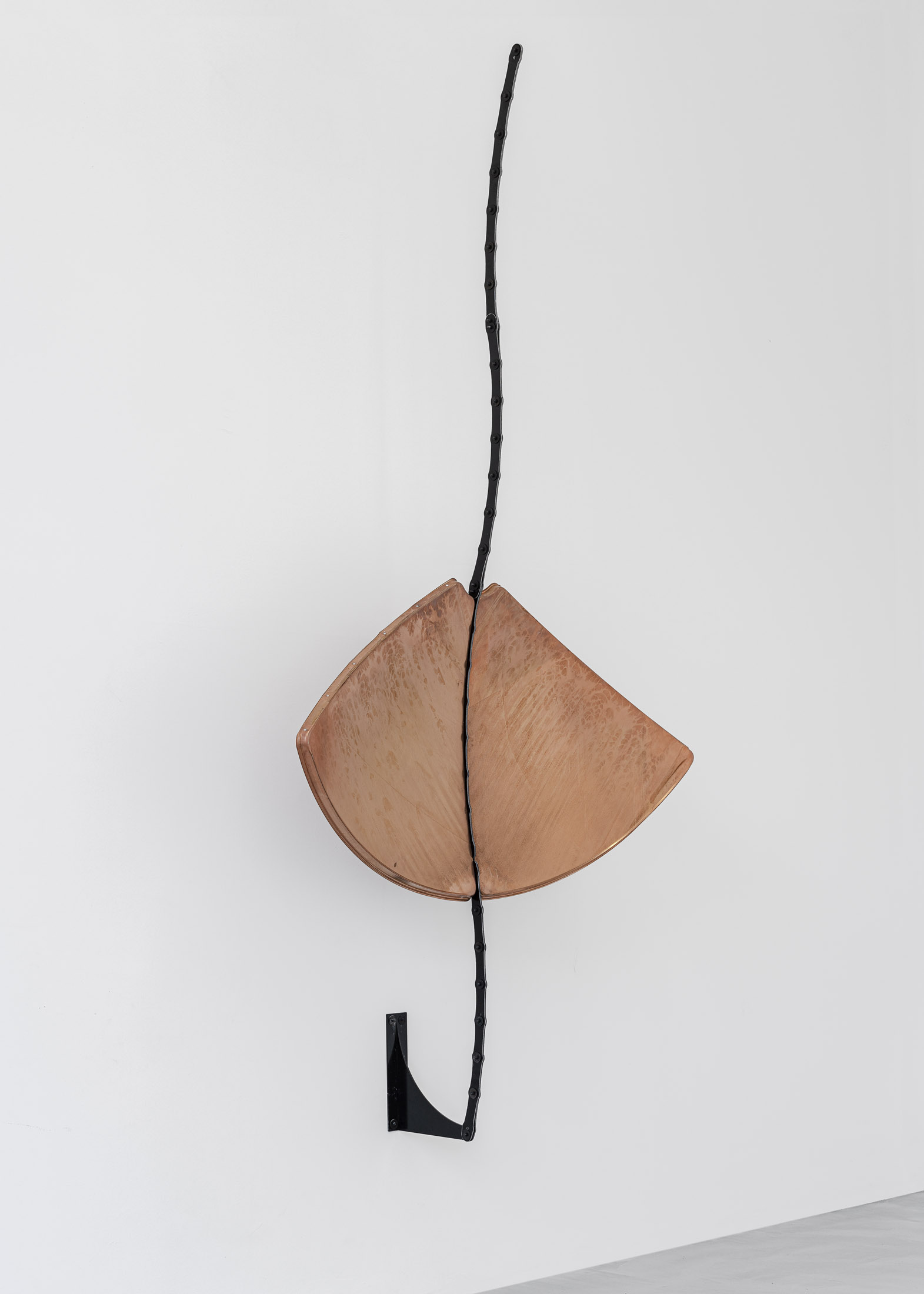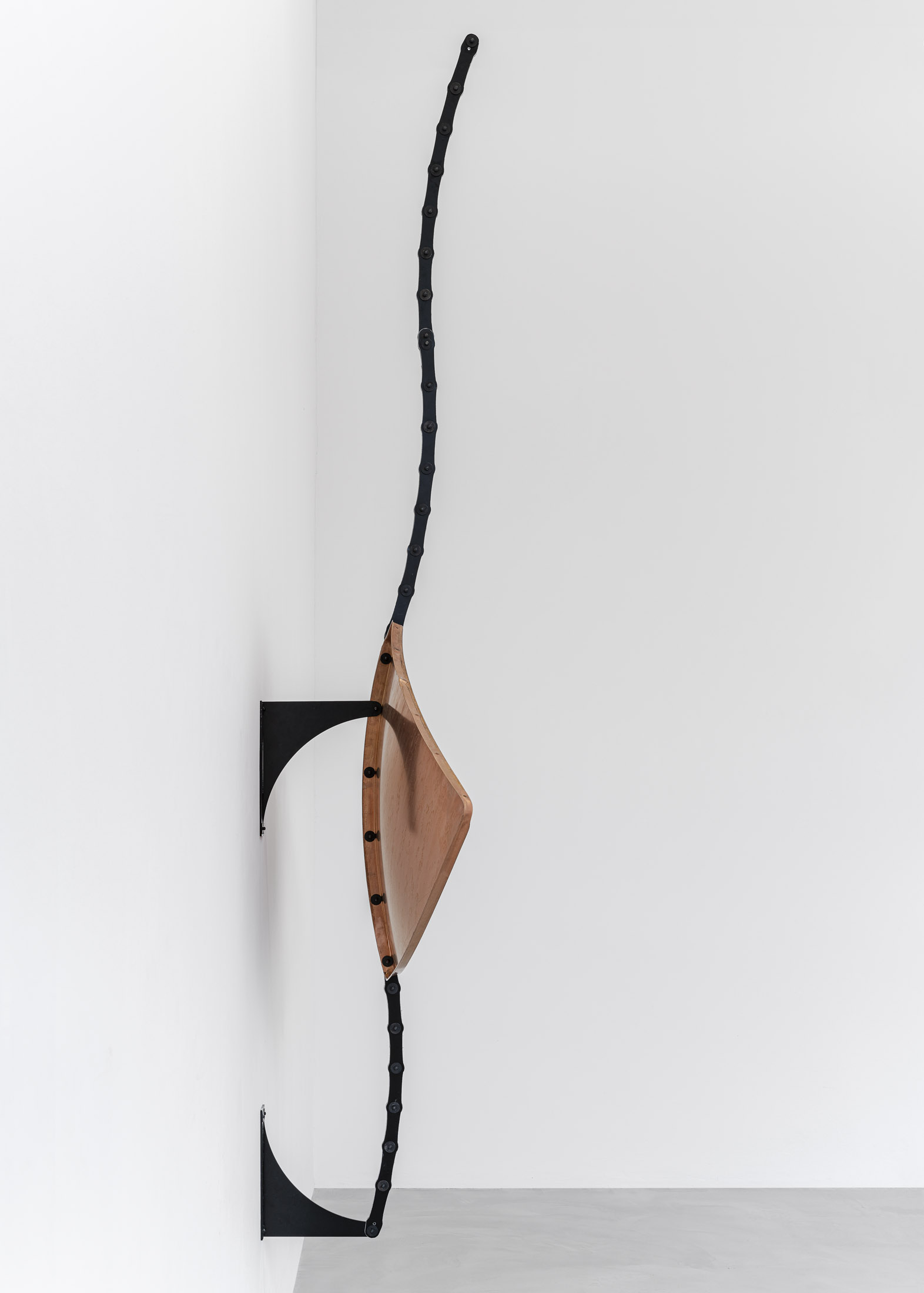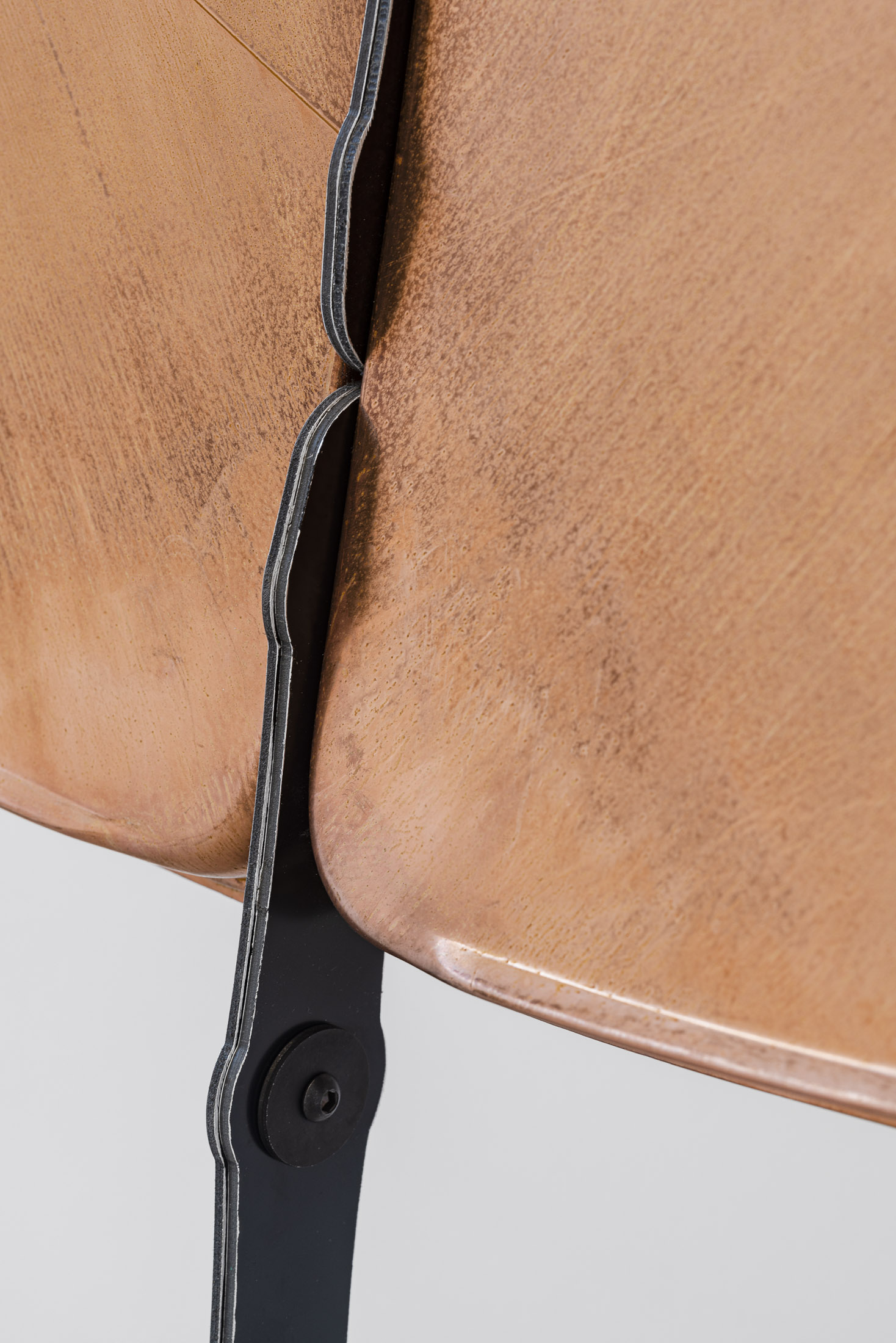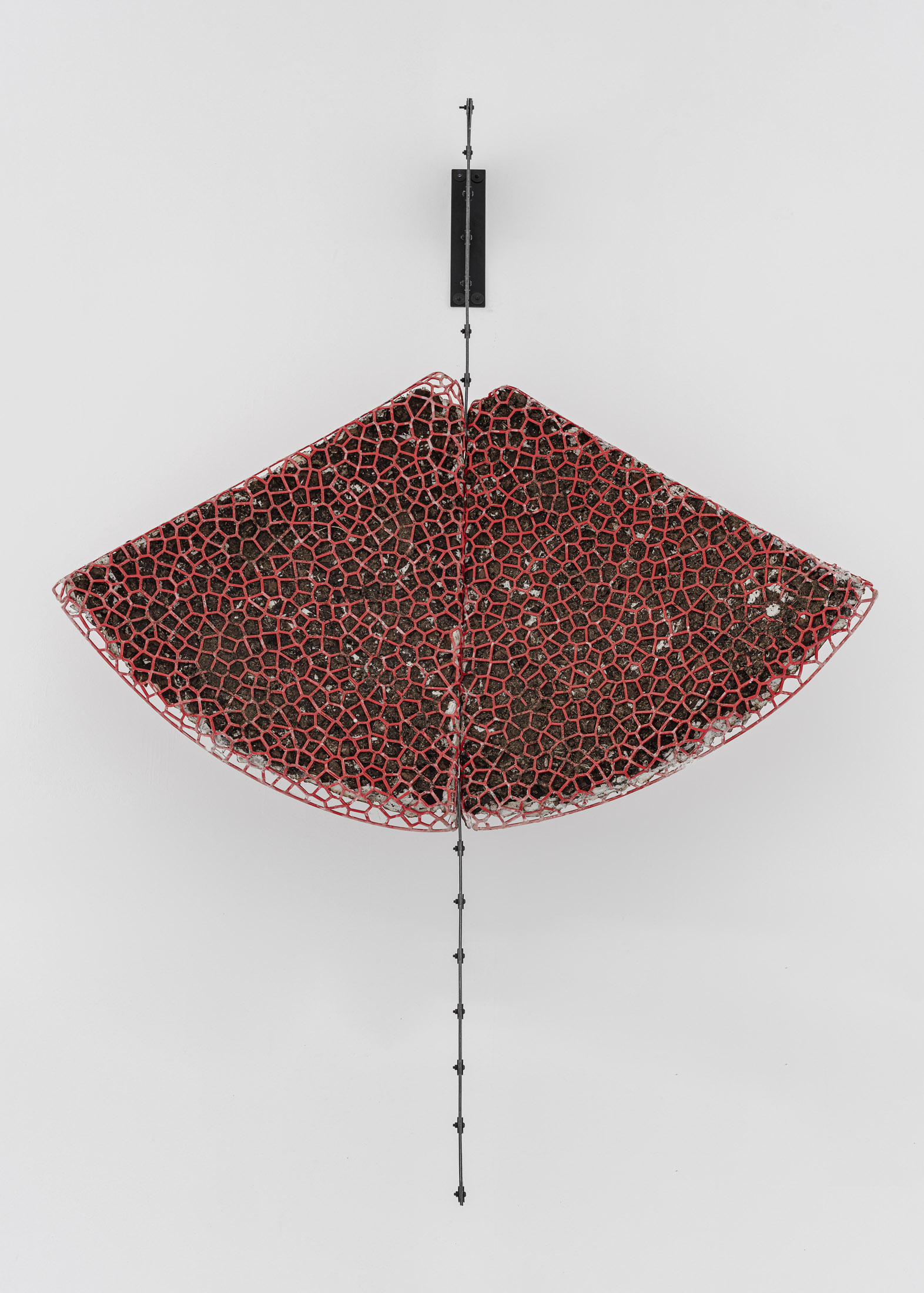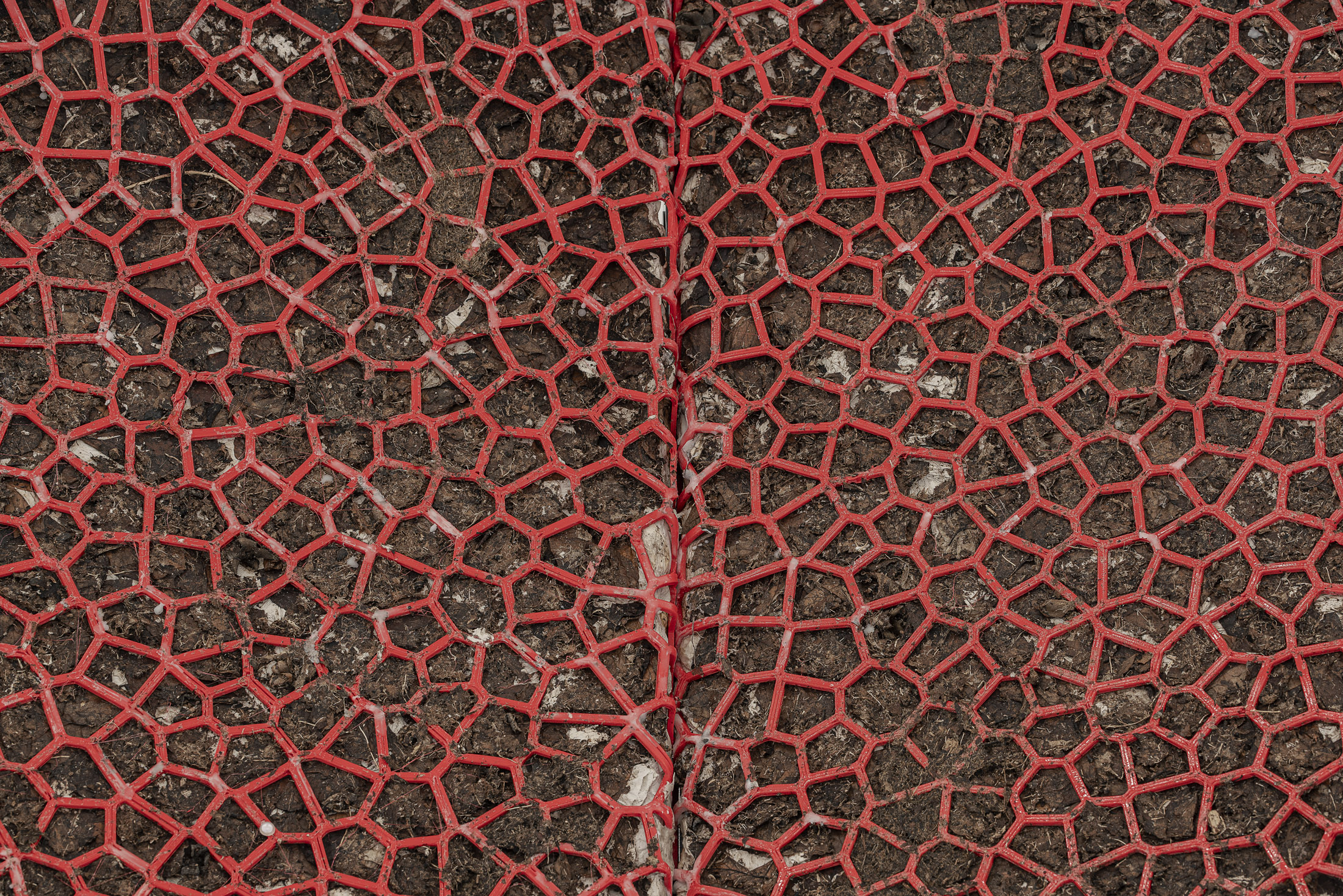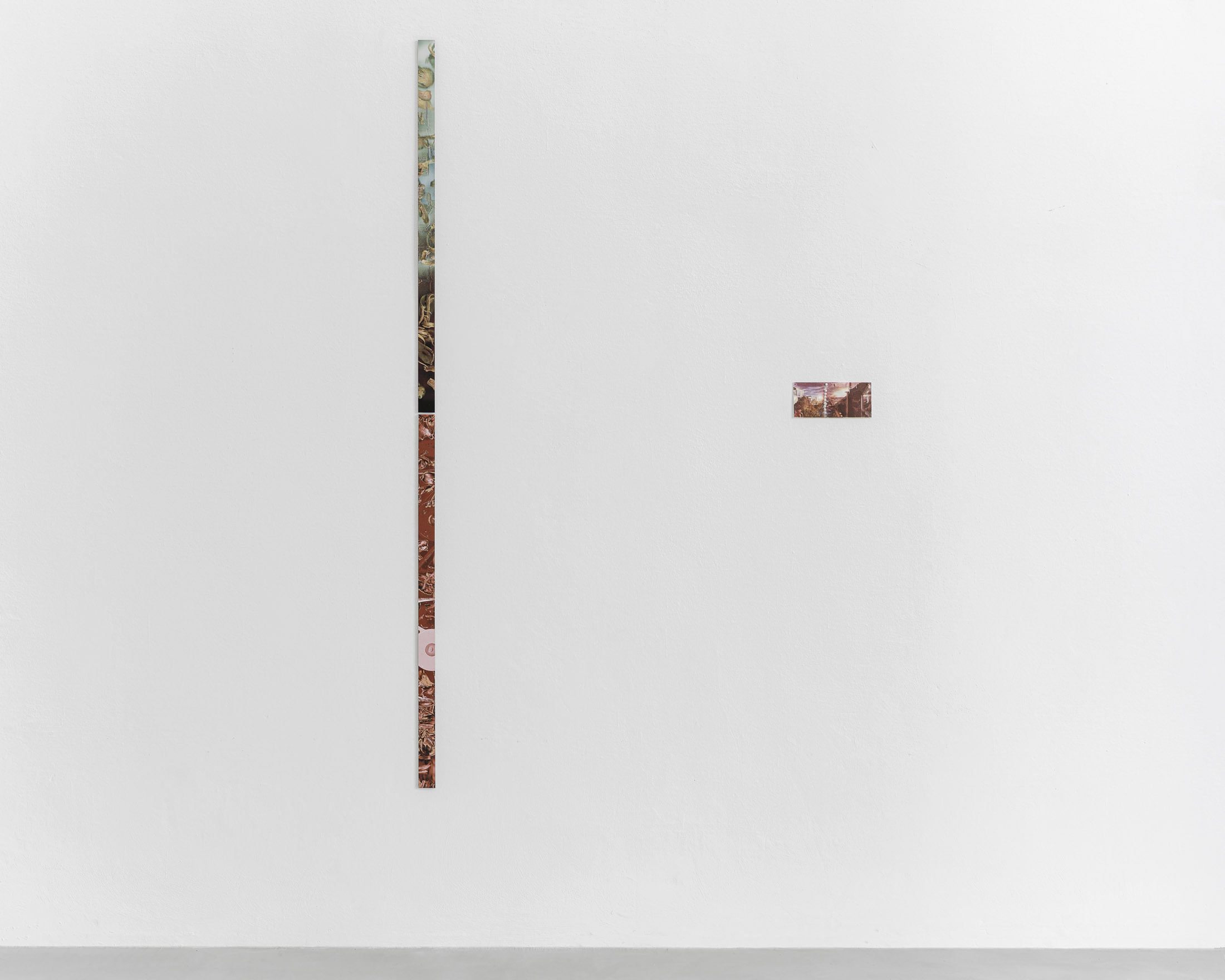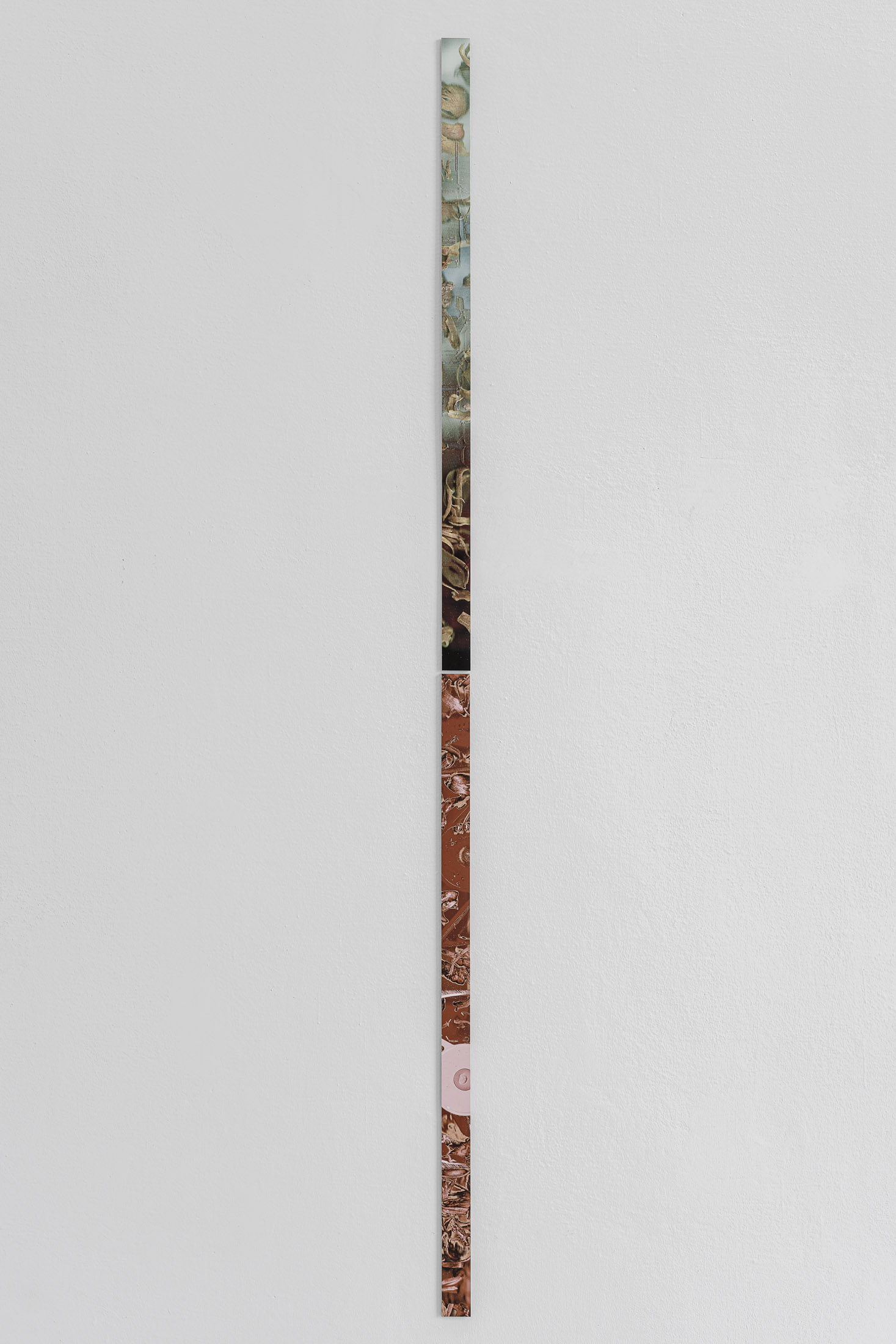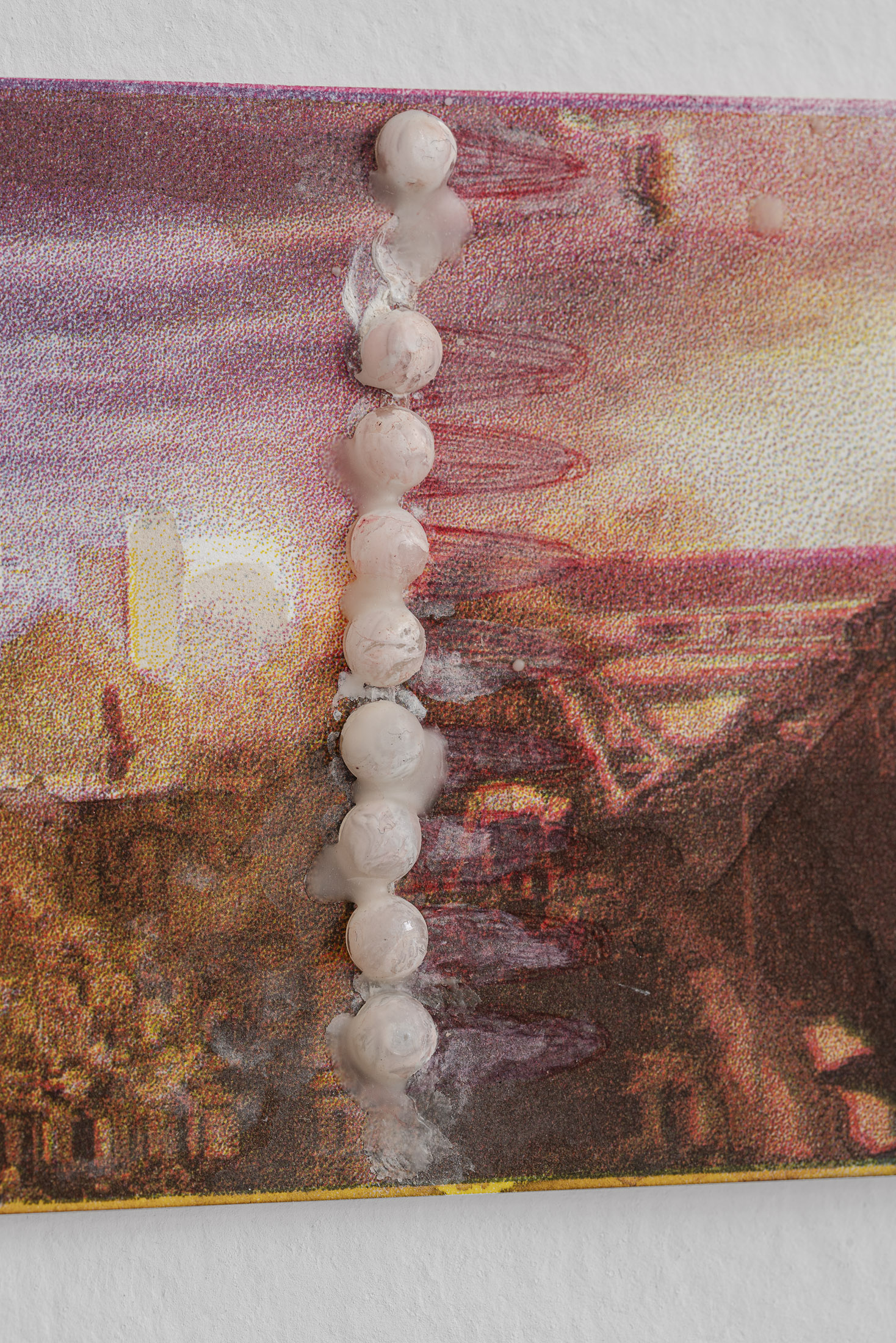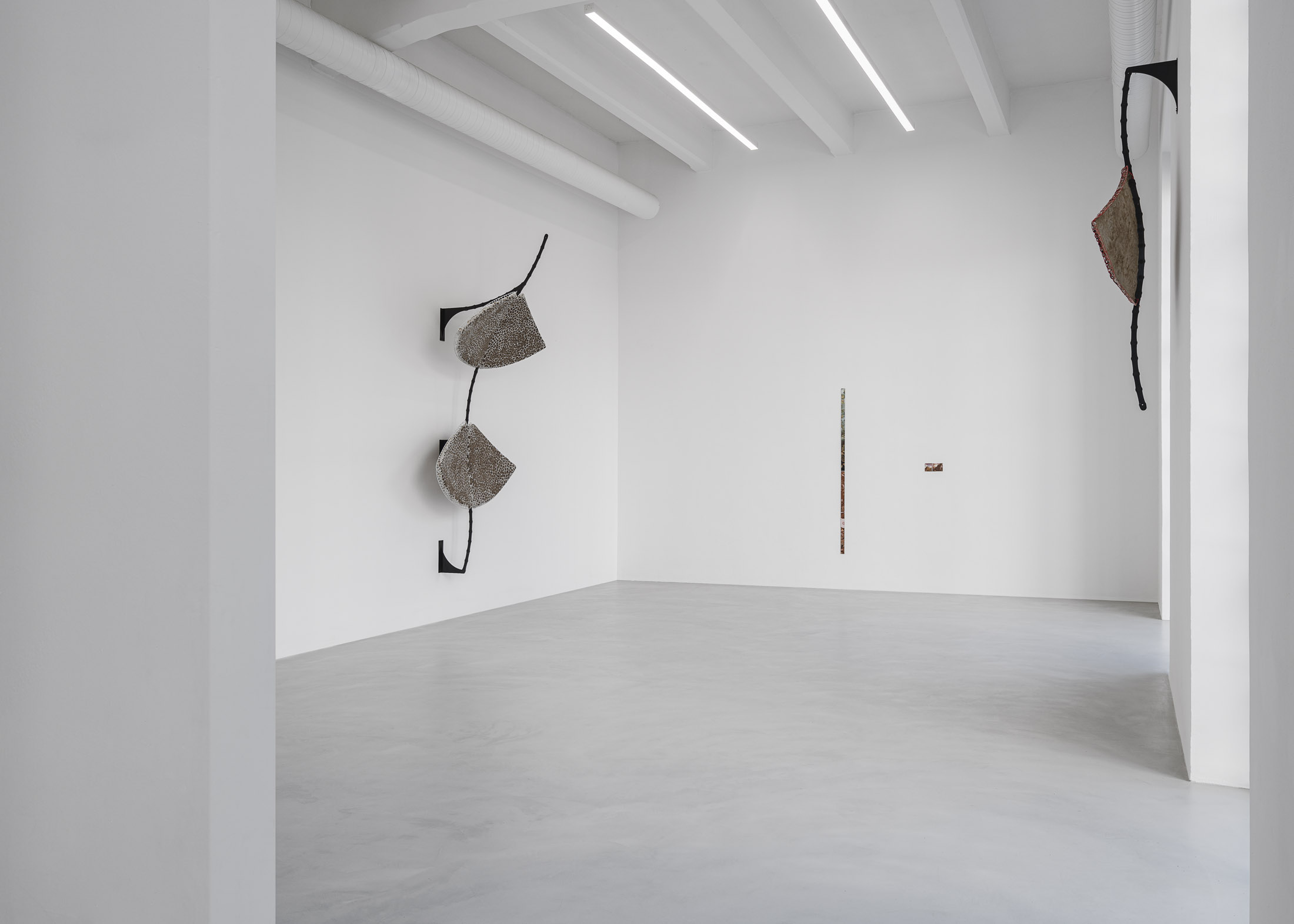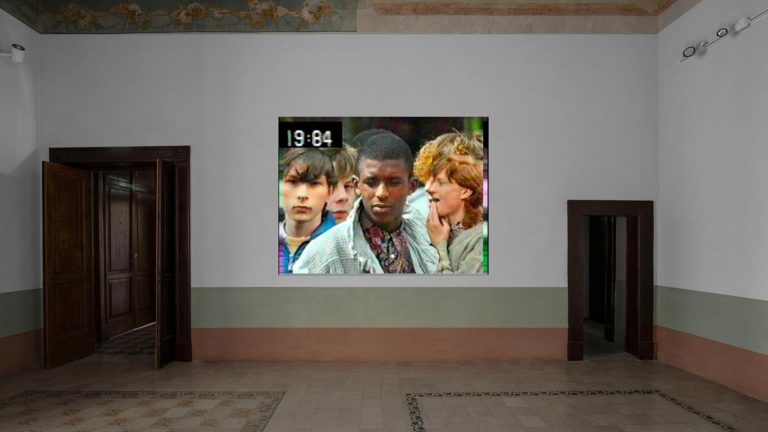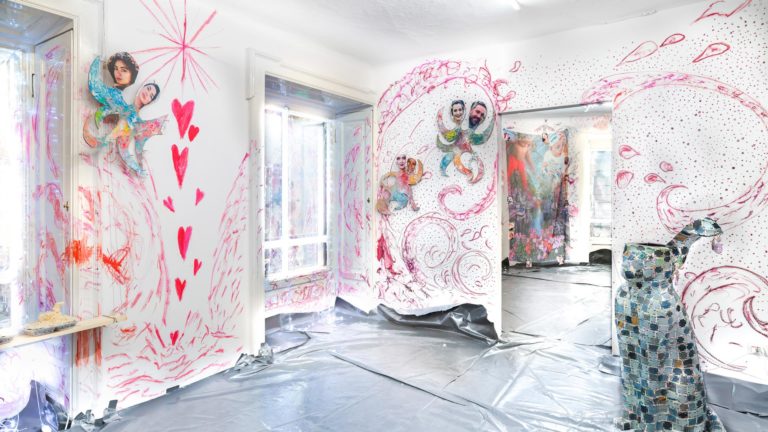Artist: Amitai Romm
Exhibition title: Graft
Venue: VEDA, Florence, Italy
Date: February 11 – March 25, 2023
Photography: all images copyright and courtesy of the artist and VEDA
Amitai Romm work is related to context specific or context reflective art practices. So thinking about the secular but esoteric symbolic space of exhibitions and how they mediate experience. And thinking expansively about the functions of such institutions in relation to other contexts and environments (of knowledge production, scientific research and natural ecosystems as mediated by technology).
The initial research which led to this exhibition, began with an interest in the morphology of the parabolic shape as it appears in both biology and technical systems. Especially in relation to commercial satellite technology as an emblem for a specific social imaginary of communication and information processing. Romm was also interested in the physical properties of the parabolic shape, which concentrates wave signals in a focal point (electromagnetic waves, light, sound). In an exhibition context, an object which is designed to effectively receive and relay signals becomes expressive.
The work on view builds upon research that was begun around 2021, exploring the hybrid relationships that can be formed between plant life, sensors, data collection processes and our own human bodies. This work was developed in dialogue with practitioners from various sites of scientific research into ecosystems and climate modeling.
The first iteration in this series was presented in the occasion of Hum, Amitai Romm solo show at Spike Island, Bristol, in 2022. The works on view were made with materials and signals from a mature beech forest in Soroe, in eastern sealand in Denmark. The forest hosts the ICOS (Integrated Carbon Observation System) station in Sorø. Which is an environmental sensing system that was set up in 1996 as a part of an international effort to collect climate related data from forests across the planet. The artist find this station interesting because it focuses on a local and specific ecosystem, while the systemic changes it documents have a profound impact everywhere on earth.
But what are the imaginative skills this type of sensation asks of us?
Graft marks a further development and level of abstraction and/or figuration for this system. In its present configuration the works depart from their parabolic origins along several pathways of fantasy in search of a new skin.
Waves are a first. Not genesis-y or mythologically (but also that), they just are. Prior to any emotion comes a wave and this coherence might be scientific as well as poetic. Drawing a line is to begin understanding something, but will it be possible to thoroughly understand that any wave is a kind of handshake between beauty and facts.
A small forest in the south-east part of Denmark is called Little Beech Forest. It is situated in very close proximity to Great Beech Forest, a bigger forest. Even in the lesser of the two beech forests, the soil contains a remarkably high level of chalk making both forests remarkably fertile. In a fertile forest, the forest floor is dense, thick with foliage and new trees for the coming wall-hung poetry.
Isn’t anything that disturbs the legality of straightness a wave. Isn’t any artwork a wave. Surely, surroundings existed before they were appreciated as landscapes, but not until landscapes started to be depicted could some industrious person come up with the certainty of nature-making through reproduction.
Sculptures are more visible than waves, but which of the two is more natural. Casted matter not looking like trees but indeed being trees shaped into resemblance of insects. A black branch looking like a spine looking like a piece of industry looking like the coarse outline of a living being.
Civilians have established a little forest, is this a ruthless transplant or a sustainable act of increased breathing. The civil faith in overcoming or downfall due to forced sprouting seems strong. Thanks to imagination high-tech exists thanks to images waves exist thanks to persistent questioning. Paper sustains fantasy.
Nanna Friis
======
Amitai Romm
Born 1985, Jerusalem
Lives and works in Copenhagen, Denmark
Amitai Romm studied at the Jutland Art Academy, Akademie der Bildenden Künste Vienna and the Royal Danish Academy of Fine Arts.
The work of Amitai Romm is, broadly, a designation of systems. Rooms of sorted materials, sifted and organised into plastic and Styrofoam, matter redistributed to see what entity might emerge. Romm’s work has called on commercial distribution methods – shipping containers and packing materials that move parcels of food and goods; parabolas that echo satellites dispersing information signals – as well as sensory distribution methods, from spices and manufactured scents to drawing and art itself as a means of systemisation. In his work is the repeated question of how we have distinguished one thing from the other over time, and what is at stake when we do so.
Recent solo exhibitions include: Graft, Veda, Florence (2023); Hum, Spike Island, Bristol (2022); Macula Lutea, Veda, Florence (2019); Hibernation, Tranen, Gentofte (2017); and How shall the sea be referred to, Bianca D’Alessandro, Copenhagen (2016). His work has been included in group exhibitions at Moderna Museet, Stockholm (2019); Vermillion Sands, Copenhagen (both 2019); the Dorothea Von Stetten Award, Kunstmuseum Bonn (2018); Kunsthal Charlottenborg, Copenhagen (2017). Room has been in residency at The Danish Institute, Rome (2018), Cité des Arts, Paris (2017) and The Danish Institute, Athens (2017).
His works has been awarded with grants by Niels Wessel Bagges Kunstfond (2017), Grosserer L.f. Foghts Fond (2017), Preben Siigers Foundation (2017) and others.
Reviews and articles f his exhibitions has been published on ArtForum, Mousse Magazine, Art Review and Kunstkritik.
Romm is also a co-founder of Diakron, a studio for transdisciplinary research and practice, and Primer, a platform for artistic and organisational development, located in the headquarters of the global water technology company Aquaporin in Kgs. Lyngby, Denmark.
Amitai Romm, Graft, 2023, exhibition view, VEDA, Florence
Amitai Romm, Graft, 2023, exhibition view, VEDA, Florence
Amitai Romm, Graft, 2023, exhibition view, VEDA, Florence
Amitai Romm, Graft, 2023, exhibition view, VEDA, Florence
Amitai Romm, Graft, 2023, exhibition view, VEDA, Florence
Amitai Romm, Graft, 2023, Plant fibres, paper pulp, PETG plastic, dibond 358 x 150 x 130 cm
Amitai Romm, Graft, 2023, Plant fibres, paper pulp, PETG plastic, dibond 358 x 150 x 130 cm
Amitai Romm, Graft, 2023, Plant fibres, paper pulp, PETG plastic, dibond 358 x 150 x 130 cm
Amitai Romm, Graft, 2023, Plant fibres, paper pulp, PETG plastic, dibond 358 x 150 x 130 cm
Amitai Romm, Graft, 2023, Copper plated steel, dibond 330 x 150 x 50 cm
Amitai Romm, Graft, 2023, Copper plated steel, dibond 330 x 150 x 50 cm
Amitai Romm, Graft, 2023, Copper plated steel, dibond 330 x 150 x 50 cm
Amitai Romm, Graft, 2023, Plant fibres, paper pulp, PETG plastic, dibond 240 x 150 x 50 cm
Amitai Romm, Graft, 2023, Plant fibres, paper pulp, PETG plastic, dibond 240 x 150 x 50 cm
Amitai Romm, Graft, 2023, exhibition view, VEDA, Florence
Amitai Romm, Scale, 2023, Inkjet print on Canson® Infinity Rag Photographique mounted on Dibond, 220 x 5 x 0.6 cm
Amitai Romm, Phantasy, 2023, Polyester plate litography on Arches Velin BFK Rives ®, ballpoint pen, plastic, beeswax, 10.5 x 23 cm
Amitai Romm, Phantasy, 2023, Polyester plate litography on Arches Velin BFK Rives ®, ballpoint pen, plastic, beeswax, 10.5 x 23 cm
Amitai Romm, Graft, 2023, exhibition view, VEDA, Florence




